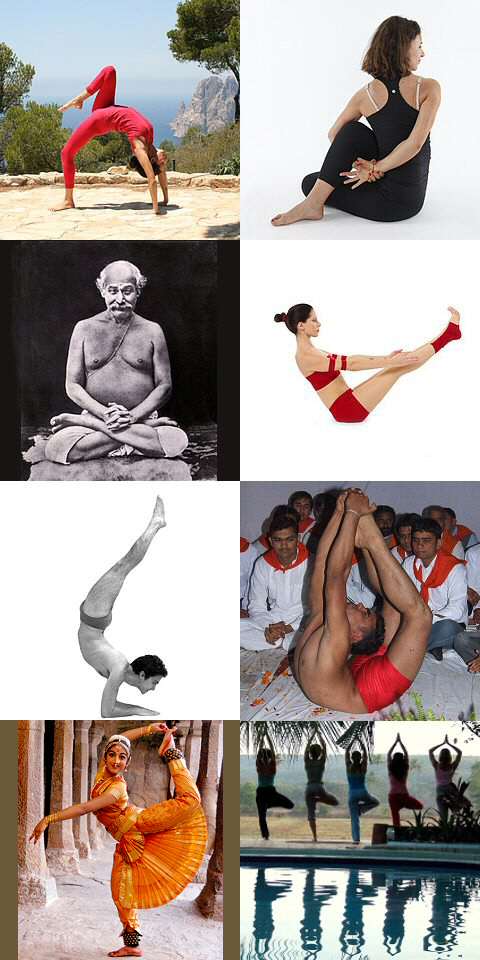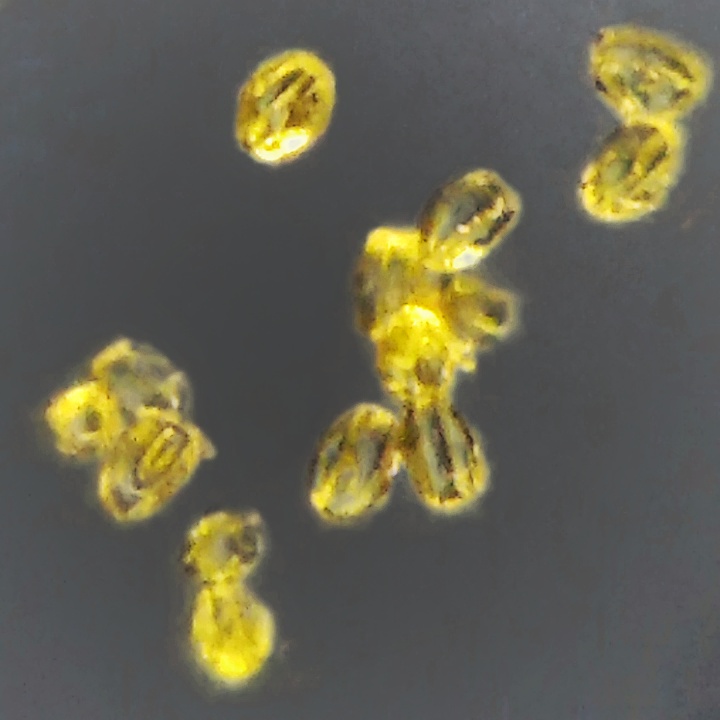|
Dhauti (Hatha Yoga)
Dhauti is one of the Shatkarmas (or Shatkriyas), which form the yogic system of body cleansing techniques. It is intended mainly to the cleaning of the digestive tract in its full length but it affects also the respiratory tract, external ears and eyes. According to the 18th century '' Gheranda Samhita'',Dhauti - Internal Cleansing in , a publication of Bihar School of Yoga it is divided into four parts: Antara (internal) Dhauti, Danta (teeth) Dhauti, Hrida (cardiac or chest region) Dhauti and Mula Shodhana (rectal cleansing). [...More Info...] [...Related Items...] OR: [Wikipedia] [Google] [Baidu] |
Shatkarma
The shatkarmas (Sanskrit: षटकर्म ''ṣaṭkarma'', literally ''six actions''), also known as shatkriyas,Shatkarmas - Cleansing Techniques in Yoga Magazine, a publication of Bihar School of Yoga are a set of purifications of the body, to prepare for the main work of yoga towards (liberation). These practices, outlined by Svatmarama in the '' |
Gheranda Samhita
''Gheranda Samhita'' (IAST: gheraṇḍasaṁhitā, घेरंडसंहिता, meaning “Gheranda's collection”) is a Sanskrit text of Yoga in Hinduism. It is one of the three classic texts of hatha yoga (the other two being the ''Hatha Yoga Pradipika'' and the ''Shiva Samhita''), and one of the most encyclopedic treatises in yoga.B. Heimann (1937)Review: The Ǧheraṇda Saṁhitā. A Treatise on Haṭha Yoga by Śrīś Chandra Vasu The Journal of the Royal Asiatic Society of Great Britain and Ireland, Cambridge University Press, No. 2 (Apr., 1937), pp. 355-357 Fourteen manuscripts of the text are known, which were discovered in a region stretching from Bengal to Rajasthan. The first critical edition was published in 1933 by Adyar Library, and the second critical edition was published in 1978 by Digambarji and Ghote. Some of the Sanskrit manuscripts contain ungrammatical and incoherent verses, and some cite older Sanskrit texts. It is likely a late 17th-century text, ... [...More Info...] [...Related Items...] OR: [Wikipedia] [Google] [Baidu] |
Yoga Magazine
The Bihar School of Yoga is a modern school of yoga founded by Satyananda Saraswati in Munger, Bihar, India, in 1963. An Institute of Yogic Studies was created in 1994. History The Bihar School of Yoga was established in 1963 at Munger, in the Indian state of Bihar, by Satyananda Saraswati. By the late 1960s, it had expanded to become an international organisation and by the mid-1970s comprised 54 ashrams in various countries. An institute of Yogic studies was created in 1994. The school publishes ''Yoga Magazine''. The school teaches traditional yoga in a modern style, for example making use of software apps to distribute knowledge of mantra yoga, hatha yoga, jnana yoga and raja yoga. Locations The primary Bihar School of Yoga campus is called Ganga Darshan. It includes residential facilities for guests and students. Satyananda yoga was taught in many organizations in the world by the mid-1970s, including eight ashrams in Australia, of which 3 were run by sannyasins. Sexu ... [...More Info...] [...Related Items...] OR: [Wikipedia] [Google] [Baidu] |
Bihar School Of Yoga
The Bihar School of Yoga is a modern school of yoga founded by Satyananda Saraswati in Munger, Bihar, India, in 1963. An Institute of Yogic Studies was created in 1994. History The Bihar School of Yoga was established in 1963 at Munger, in the Indian state of Bihar, by Satyananda Saraswati. By the late 1960s, it had expanded to become an international organisation and by the mid-1970s comprised 54 ashrams in various countries. An institute of Yogic studies was created in 1994. The school publishes ''Yoga Magazine''. The school teaches traditional yoga in a modern style, for example making use of software apps to distribute knowledge of mantra yoga, hatha yoga, jnana yoga and raja yoga. Locations The primary Bihar School of Yoga campus is called Ganga Darshan. It includes residential facilities for guests and students. Satyananda yoga was taught in many organizations in the world by the mid-1970s, including eight ashrams in Australia, of which 3 were run by sannyasins. Sexu ... [...More Info...] [...Related Items...] OR: [Wikipedia] [Google] [Baidu] |
Inverted Asana
An asana is a body posture, originally and still a general term for a sitting meditation pose,Verse 46, chapter II, "Patanjali Yoga sutras" by Swami Prabhavananda, published by the Sri Ramakrishna Math p. 111 and later extended in hatha yoga and modern yoga as exercise, to any type of position, adding reclining, standing, inverted, twisting, and balancing poses. The ''Yoga Sutras of Patanjali'' define "asana" as " position thatis steady and comfortable". Patanjali mentions the ability to sit for extended periods as one of the eight limbs of his system. Patanjali ''Yoga sutras'', Book II:29, 46 Asanas are also called yoga poses or yoga postures in English. The 10th or 11th century '' Goraksha Sataka'' and the 15th century '' Hatha Yoga Pradipika'' identify 84 asanas; the 17th century ''Hatha Ratnavali'' provides a different list of 84 asanas, describing some of them. In the 20th century, Indian nationalism favoured physical culture in response to colonialism. In that enviro ... [...More Info...] [...Related Items...] OR: [Wikipedia] [Google] [Baidu] |
Vajrasana (yoga)
Vajrasana (), Thunderbolt Pose, or Diamond Pose, is a kneeling asana in hatha yoga and modern yoga as exercise. Ancient texts describe a variety of poses under this name. Etymology and origins The name comes from the Sanskrit words ''vajra'', a weapon whose name means "thunderbolt" or "diamond", and ''asana'' (आसन, āsana) meaning "posture" or "seat". The name Vajrasana denotes a medieval meditation seat, but its usage varied. The 15th century '' Hatha Yoga Pradipika'' called it a synonym of Siddhasana, where one of the heels presses the root of the penis; according to ''Yoga-Mimamsa'' III.2 p. 135, this explains the reference to the vajra weapon. The 17th century '' Gheranda Samhita'' 2.12 describes what '' Light on Yoga'' calls Virasana, with the feet beside the buttocks, while in other texts Vajrasana appears to mean the modern kneeling-down position, with the buttocks resting on the feet. The yoga scholar Norman Sjoman notes that ''Light on Yoga'' is unclear ... [...More Info...] [...Related Items...] OR: [Wikipedia] [Google] [Baidu] |
Evert
Evert is a Dutch and Swedish short form of the Germanic masculine name "Everhard" (alternative Eberhard). at the database of given names in the Netherlands. It is also used as surname. Notable people with the name include: Given name * (1602–1657), Dutch still life painter * (1772–1809), Norwegian naval officer * |
Neem
''Azadirachta indica'', commonly known as neem, nimtree or Indian lilac, is a tree in the mahogany family Meliaceae. It is one of two species in the genus ''Azadirachta'', and is native to the Indian subcontinent and most of the countries in Africa. It is typically grown in tropical and semi-tropical regions. Neem trees also grow on islands in southern Iran. Its fruits and seeds are the source of neem oil. Description Neem is a fast-growing tree that can reach a height of , and rarely . It is deciduous, shedding many of its leaves during the dry winter months. The branches are wide and spreading. The fairly dense crown is roundish and may reach a diameter of . The neem tree is similar in appearance to its relative, the chinaberry (''Melia azedarach''). The opposite, pinnate leaves are long, with 20 to 30 medium to dark green leaflets about long. The terminal leaflet often is missing. The petioles are short. White and fragrant flowers are arranged in more-or-less drooping a ... [...More Info...] [...Related Items...] OR: [Wikipedia] [Google] [Baidu] |
Turmeric
Turmeric () is a flowering plant, ''Curcuma longa'' (), of the ginger family, Zingiberaceae, the rhizomes of which are used in cooking. The plant is a perennial, rhizomatous, herbaceous plant native to the Indian subcontinent and Southeast Asia that requires temperatures between and a considerable amount of Annual rainfall in india, annual rainfall to thrive. Plants are gathered each year for their rhizomes, some for propagation in the following season and some for consumption. The rhizomes are used fresh or boiled in water and dried, after which they are ground into a deep orange-yellow powder commonly used as a food coloring#Natural food dyes, coloring and flavoring agent in many Asian cuisines, especially for Curry, curries, as well as for dyeing, characteristics imparted by the principal turmeric constituent, curcumin. Turmeric powder has a warm, bitter, black pepper-like flavor and earthy, mustard plant, mustard-like aroma. Curcumin, a bright yellow chemical produced by ... [...More Info...] [...Related Items...] OR: [Wikipedia] [Google] [Baidu] |
Roots Of Yoga
''Roots of Yoga'' is a 2017 book of commentary and translations from over 100 ancient and medieval yoga texts, mainly written in Sanskrit but including several other languages, many not previously published, about the origins of yoga including practices such as āsana, mantra, and meditation, by the scholar-practitioners James Mallinson and Mark Singleton. Critics unanimously welcomed the book, noting that it was surprising given yoga's popularity that many of its key texts had never before been translated. They described the book as scholarly, unprecedented, and admirably unbiased, making available a wealth of material in far more accessible form than ever before, and revealing yoga to consist of many strands rather than having a single definite philosophy and interpretation. Book Publication ''Roots of Yoga'' was published by Penguin Classics in 2017 as a paperback volume of 540 pages; it was not preceded by a hardback edition. The book has no illustrations other than the ... [...More Info...] [...Related Items...] OR: [Wikipedia] [Google] [Baidu] |






